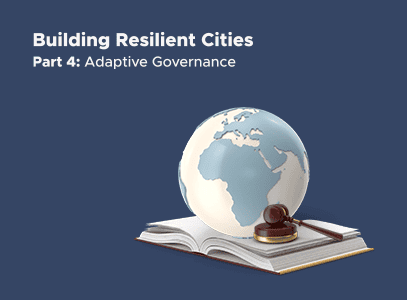Countries struggling with economic development face two critical challenges to overcome when trying to introduce substantive reforms— the logic of collective action and institutional sclerosis. These ideas were developed by Mancur Olson, a giant within institutional economics, in his two most well known works: The Logic of Collective Action (1971) and The Rise and Decline of Nations (1982).
The Logic of Collective Action argues that concentrated interests will tend to triumph over dispersed interests, even if the outcome desired by the concentrated group is harmful to society on net. Because the disinterested group is only marginally harmed while the interested group benefits greatly, political organization to enact a socially preferable change is difficult.
Sugar subsidies in the United States are the classic example of a collective action problem. American consumers would each save $10 if subsidies to sugar producers were eliminated, but sugar producers would each lose tens of thousands of dollars if the subsidies were eliminated. Despite the net effect of the subsidies being negative, they remain in place because consumers will not organize politically over losing $10, but sugar producers would organize if the subsidy were in danger of elimination.
Olson builds upon his theory of collective action problems in his second book, The Rise and Decline of Nations, by introducing the concept of “institutional sclerosis.” New rents will continue to be captured while very few of the old rents are eliminated. These pressures induce “sclerosis,” or a dampening of economic growth, which, over the long-run can be substantial. The difference between 50 years at two percent growth and 50 years at three percent growth is not a trivial sum. The cost of those sugar subsidies alone may be trivial, but the aggregate cost of thousands of subsidies, tariffs, monopolies, regulations, and other policies is significant. Because collective action problems erect barriers to social and institutional change, the aggregate weight of economic rents, and of the act of rent-seeking itself, will grow over time.
Charter cities are a way to overcome collective action problems and institutional sclerosis in the search for economic growth. By taking a blank slate approach to the city’s governing legal framework and building on greenfield land, charter cities are able to bypass Olson’s challenges that existing polities must bear. In a newly created jurisdiction on previously undeveloped land, there are no well-entrenched special interests ready to defend long-captured rents. And because rents have not accumulated over time, there is no limiting effect on economic growth. Charter cities are not intended to be isolated islands of good governance— they offer a challenge to existing governments. A la Charles Tiebout, successful charter cities will force other jurisdictions to make similar reforms in order to remain economically competitive. Other city, state, and national governments likely won’t be able to take the same blank slate approach as a charter city, but a nearby competitor may be enough of a demonstration to generate the political will for reform.
Charter cities may avoid Olson’s threats initially, however, they must remain on-guard over the long-run in order to avoid falling in to the same traps as existing jurisdictions. The example set by Singapore and its founding father Lee Kuan Yew on issues of corruption, the integrity of public officials, and good governance generally is instructive for the future leaders and officials of charter cities, as they will likely be located in countries that struggle immensely with corruption. Lee focuses heavily on the importance of developing a leadership culture that is unified in its cause to prevent and eliminate corruption, support market competition, and encourage public trust in institutions. Charter city leaders will need to take these lessons to heart, lest they face the rise… and decline of charter cities.







